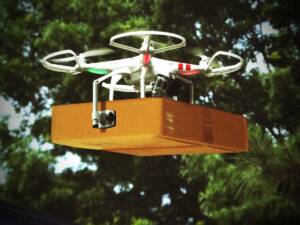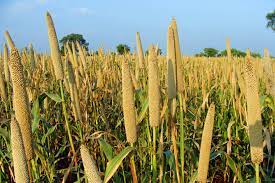No products in the cart.

the Potential of Agri Drones Revolutionizing Modern Agriculture
Introduction to Agri Drones
- How Agri Drones Work
- Overview of technology
- Sensors and data collection
- Benefits of Agri Drones
- Precision agriculture
- Increased efficiency
- Cost-effectiveness
- Applications of Agri Drones
- Crop monitoring and management
- Pest control
- Irrigation management
- Challenges and Limitations
- Regulatory issues
- Initial investment costs
- Skill and training requirements
- Future Trends in Agri Drones
- Integration with AI and machine learning
- Improved battery life and flight times
- Case Studies and Success Stories
- Real-world examples of agri drone usage
- Environmental Impact
- Reduction in chemical usage
- Conservation of resources
- Conclusion
Unleashing the Potential of Agri Drones: Revolutionizing Modern Agriculture
If you’ve ever looked up at the sky and seen a drone buzzing overhead, you might have wondered what role these unmanned aerial vehicles play in agriculture. Well, they’re not just for capturing breathtaking aerial shots or delivering packages anymore. Agri drones, also known as agricultural drones, are transforming the way farming is done, offering a plethora of benefits from increased efficiency to precise crop management. Let’s delve into this exciting technology and explore how it’s reshaping modern agriculture.
Introduction to Agri Drones
Agri drones are specialized UAVs equipped with advanced sensors, cameras, and other technology designed specifically for agricultural applications. These drones have become indispensable tools for farmers, agronomists, and agricultural researchers worldwide, offering unprecedented insights into crop health, soil conditions, and more.

How Agri Drones Work
Overview of Technology
Agri drones utilize a combination of GPS technology, onboard sensors, and high-resolution cameras to gather data about crop health, soil moisture levels, and other vital parameters. This data is then analyzed to provide farmers with actionable insights, allowing them to make informed decisions about crop management practices.
Sensors and Data Collection
Modern agri drones are equipped with a variety of sensors, including multispectral, thermal, and LiDAR sensors, allowing them to capture detailed information about crops and fields. These sensors can detect subtle differences in crop health, identify pest infestations, and even measure soil moisture levels with remarkable accuracy.
Benefits of Agri Drones
Precision Agriculture
One of the primary benefits of agri drones is their ability to enable precision agriculture practices. By gathering detailed data about crop health and soil conditions, farmers can tailor their farming practices to specific areas of their fields, optimizing inputs such as water, fertilizers, and pesticides.
Increased Efficiency
Agri drones can cover large areas of farmland in a fraction of the time it would take traditional methods such as walking or driving. This increased efficiency allows farmers to monitor their crops more frequently and respond to issues such as pest infestations or nutrient deficiencies in a timely manner.
Cost-Effectiveness
While the initial investment in agri drone technology may seem significant, many farmers find that the long-term cost savings outweigh the upfront costs. By optimizing inputs and reducing waste, agri drones can help farmers increase yields and profitability over time.
Applications of Agri of Drones
Crop Monitoring and Management
One of the most common applications of agri of drones is crop monitoring and management. By flying over fields and capturing high-resolution images, drones can identify areas of stress or disease in crops, allowing farmers to take corrective action before problems escalate.
Pest Control
Agri of drones can also be used for pest control purposes, either by spraying pesticides directly onto crops or by deploying pheromone traps to attract and capture pests. This targeted approach to pest management can reduce the need for chemical inputs and minimize environmental impact.
Irrigation Management
By measuring soil moisture levels and identifying areas of drought stress, agri of drones can help farmers optimize their irrigation practices, ensuring that crops receive the right amount of water at the right time.
Challenges and Limitations
Regulatory Issues
One of the main challenges facing the widespread adoption of agri of drones is the complex regulatory landscape governing their use. In many countries, strict regulations govern where and how drones can be flown, as well as data privacy concerns related to aerial imagery.
Initial Investment Costs
Another barrier to entry for many farmers is the initial investment costs associated with purchasing and operating agri of drone systems. While prices have come down in recent years, high-quality drones equipped with advanced sensors can still be prohibitively expensive for some.
Skill and Training Requirements
Using agri of drones effectively requires a certain level of technical expertise and training. Farmers and operators must be proficient in drone piloting, data analysis, and interpretation to derive maximum value from their investment.
Future Trends in Agri of Drones
Integration with AI and Machine Learning
One exciting trend in the field of agri of drones is the integration of artificial intelligence and machine learning algorithms. These technologies can analyze vast amounts of aerial imagery data to identify patterns and anomalies, providing even more valuable insights to farmers.
Improved Battery Life and Flight Times
As battery technology continues to improve, we can expect to see agri of drones with longer flight times and greater endurance. This will enable drones to cover larger areas of farmland in a single flight, increasing their overall efficiency and utility.
Case Studies and Success Stories
Real-World Examples of Agri of Drone Usage
Numerous case studies and success stories demonstrate the effectiveness of agri of drones in improving crop yields, reducing input costs, and mitigating environmental impact. From vineyards in California to rice fields in Southeast Asia, farmers around the world are harnessing the power of agri drones to revolutionize their operations.
Environmental Impact
Reduction in Chemical Usage
By enabling targeted pesticide applications and optimized irrigation practices, agri drones can help reduce the overall use of chemical inputs in agriculture. This not only benefits the environment by minimizing pollution and runoff but also contributes to healthier soils and ecosystems.
Conservation of Resources
Agri drones can also help farmers conserve resources such as water and fertilizers by ensuring that inputs are applied only where and when they are needed. This can lead to more sustainable farming practices and a reduced environmental footprint.
Conclusion
In conclusion, agri drones represent a groundbreaking technology with the potential to revolutionize modern agriculture. From precision crop monitoring to targeted pest control, the applications of agri drones are diverse and far-reaching. While challenges such as regulatory issues and initial investment costs remain, the benefits of agri drones are undeniable. As technology continues to advance and adoption rates increase, we can expect to see agri drones play an increasingly integral role in feeding the growing global population while minimizing environmental impact.
FAQs (Frequently Asked Questions)
- Are agri drones legal to use in all countries?
- The legality of agri drone use varies from country to country and may be subject to strict regulations. It’s essential to familiarize yourself with local laws and regulations before deploying agri drones.
- How much does it cost to buy an agri drone?
- The cost of agri drones can vary widely depending on factors such as size, payload capacity, and sensor capabilities. High-end models equipped with advanced sensors can cost tens of thousands of dollars, while smaller, entry-level drones may be more affordable.
- What kind of training is required to operate an agri drone?
- Operating an agri drone effectively requires training in drone piloting, data analysis, and interpretation. Many manufacturers offer training programs and certification courses to help users develop the necessary skills.
- Can agri drones be used for organic farming practices?
- Yes, agri drones can be used in organic farming practices to monitor crop health, detect pest infestations, and optimize resource use. Their precision and targeted application capabilities make them well-suited for environmentally friendly farming methods.
- Are there any privacy concerns associated with agri drone use?
- As with any technology that involves aerial surveillance, there are potential privacy concerns associated with agri drone use. It’s essential for operators to be mindful of privacy laws and regulations and to obtain consent from landowners before conducting drone flights over private property.
Go and turn on towards organic farming to save future and thire save childs:
Elevate Plant Growth with Premium Bone Powder – Buy Now!
Organic Cow Dung Compost: Transform Your Garden Naturally
Premium Humic Acid for Healthy Plants | Enhance Soil & Boost Growth
Boost Plant Growth Naturally with Mustard Cake | Organic Fertilizer
Transform Your Garden with NPK Fertilizer | Boost Growth by 30%
Premium Perlite for Enhanced Gardening | Buy Now
Live Earthworms with Enhance Your Garden (soil health)
1 Neem Khali: Unveiling the Wonders of Nature
1Transform your garden with vermiwash-buy now
1 Premium quality Vermicompost [ केचुआ खाद ]
Follow us:




